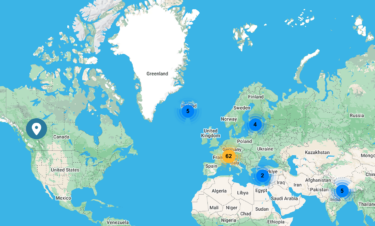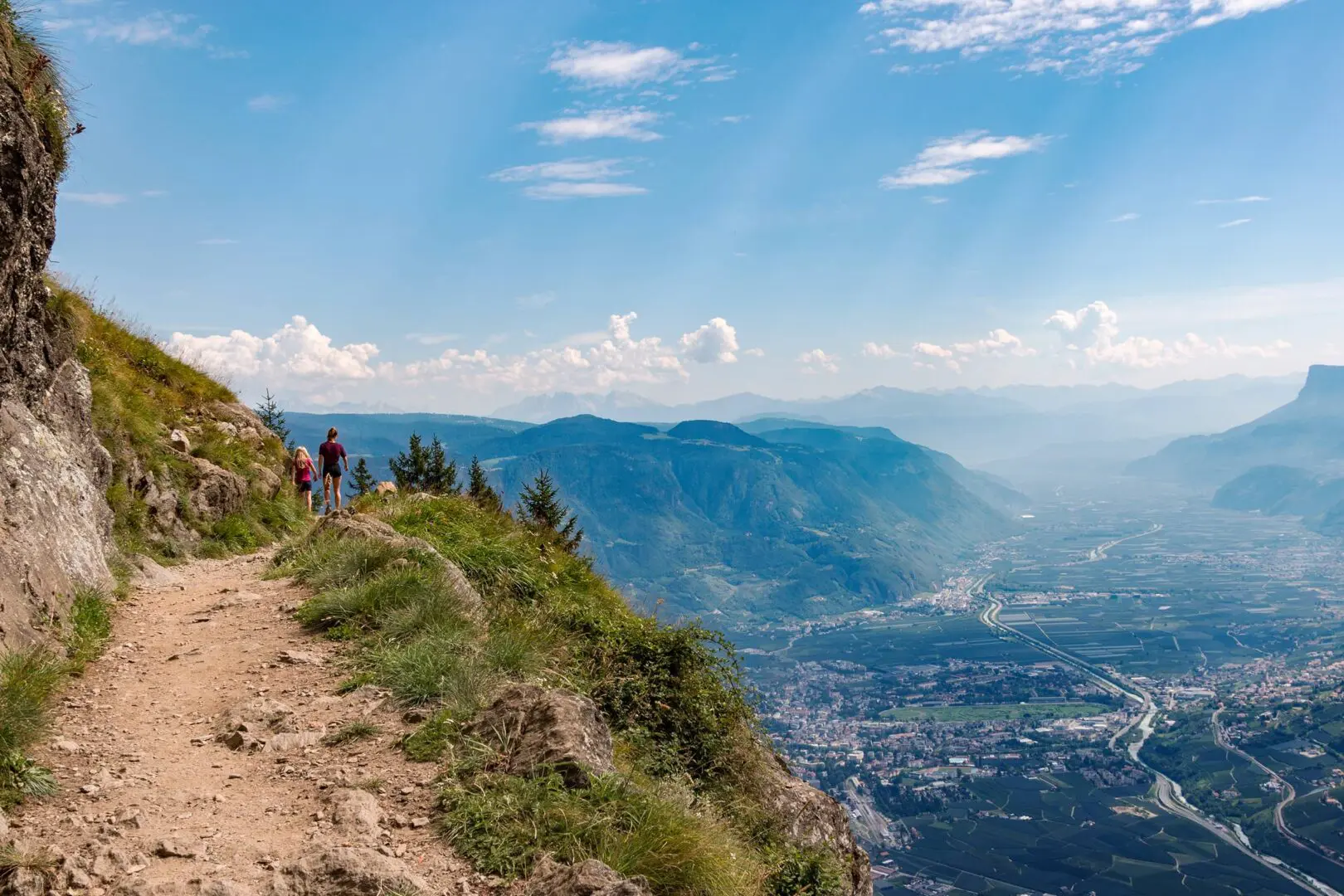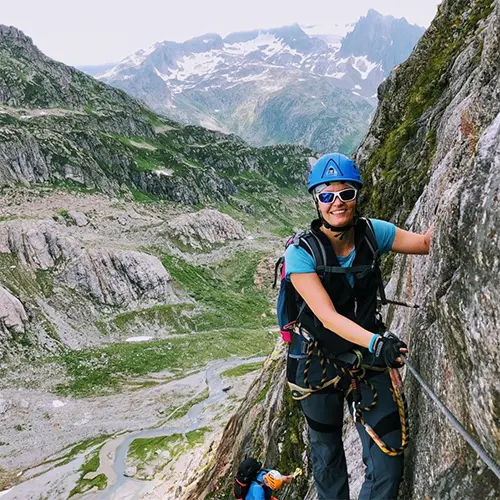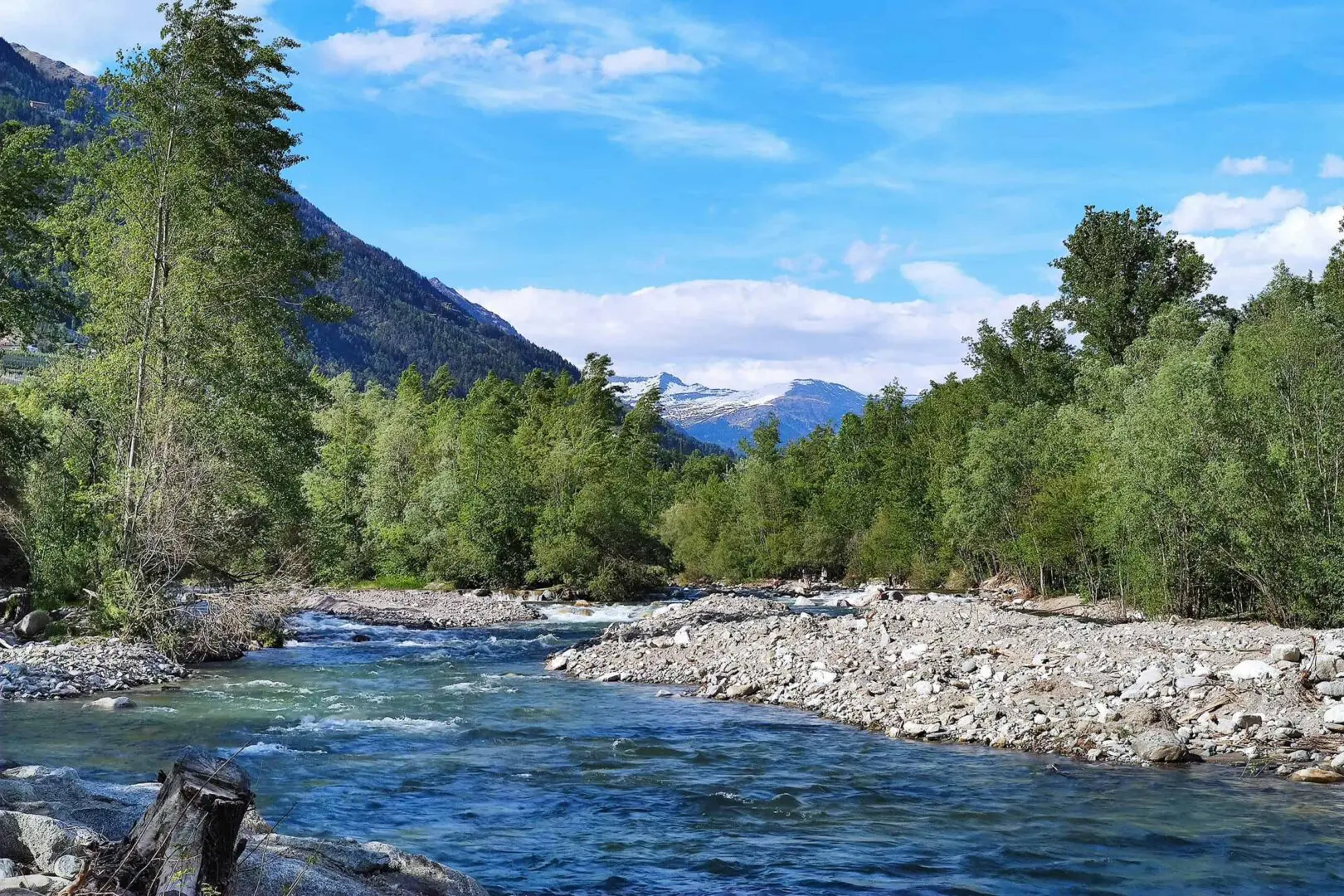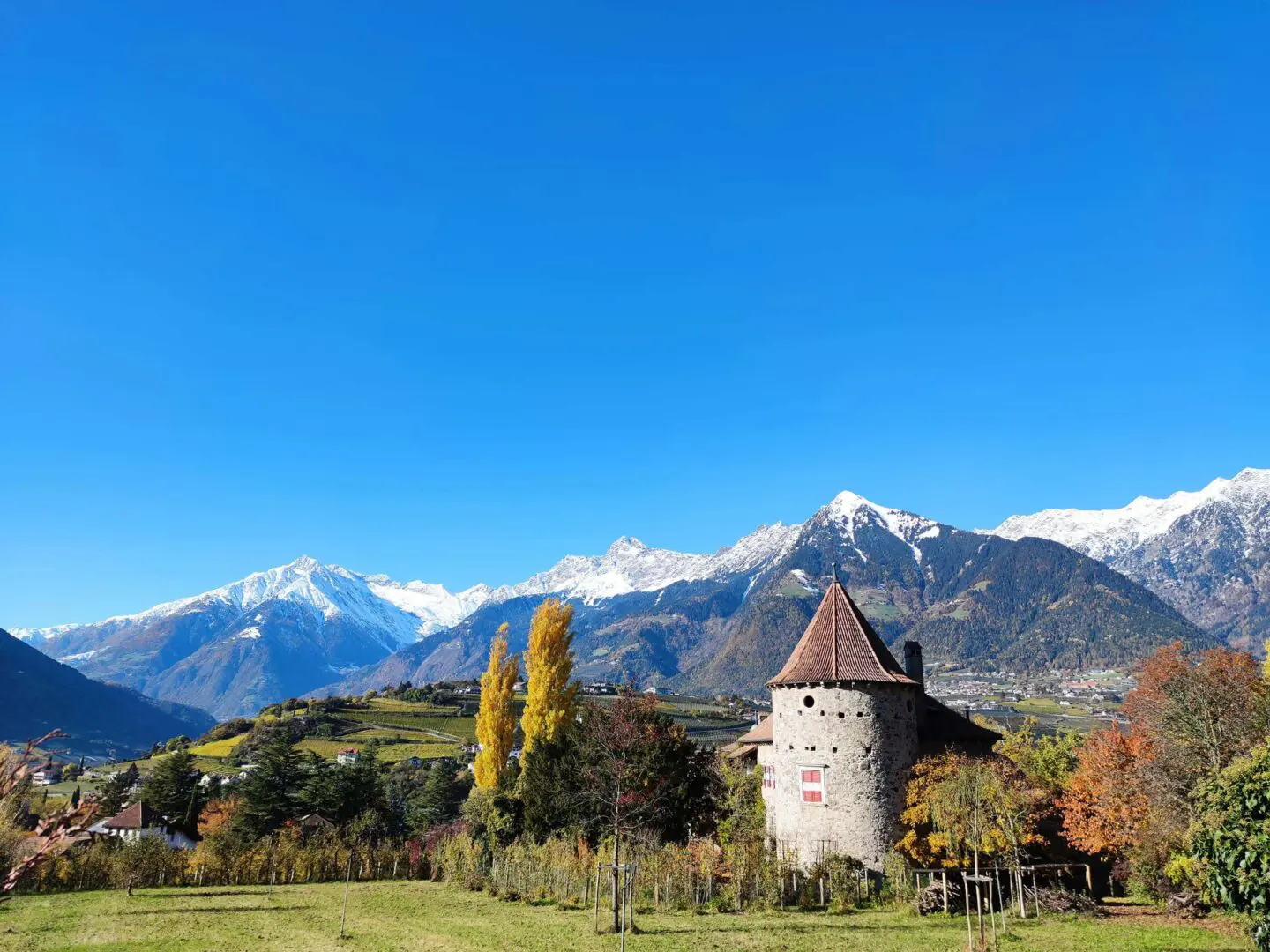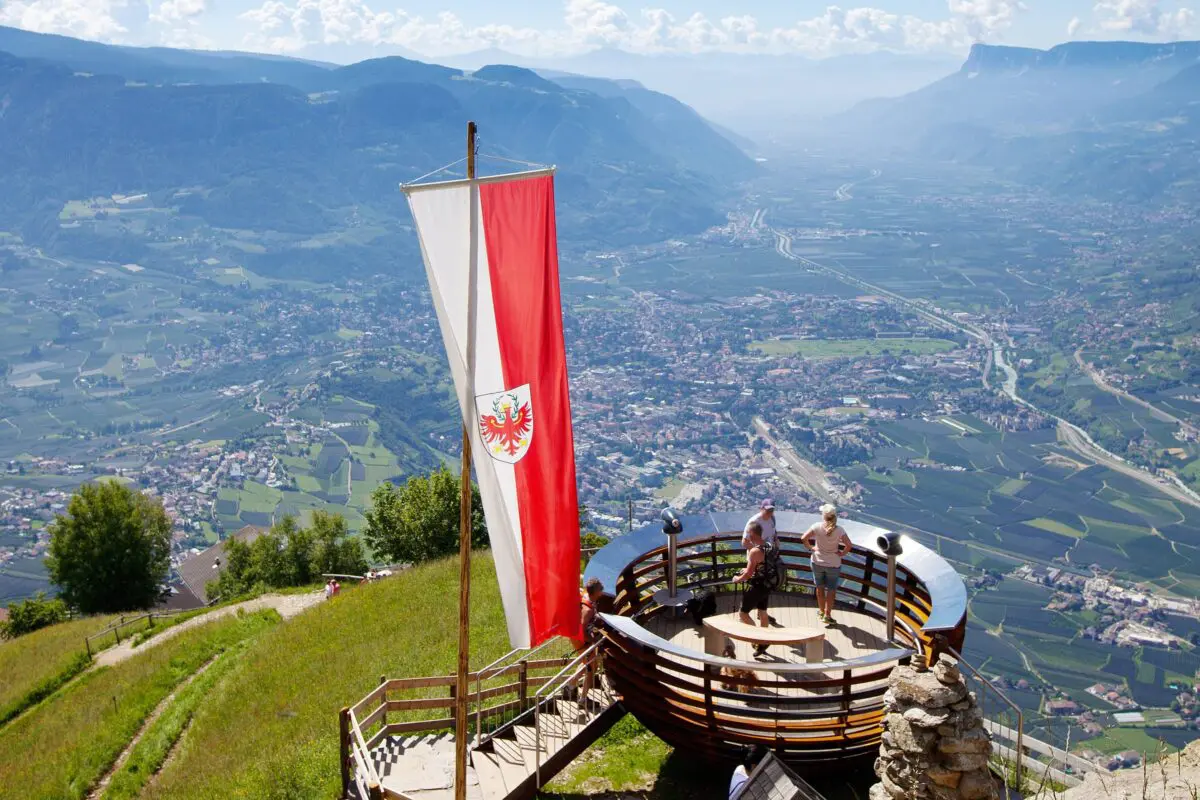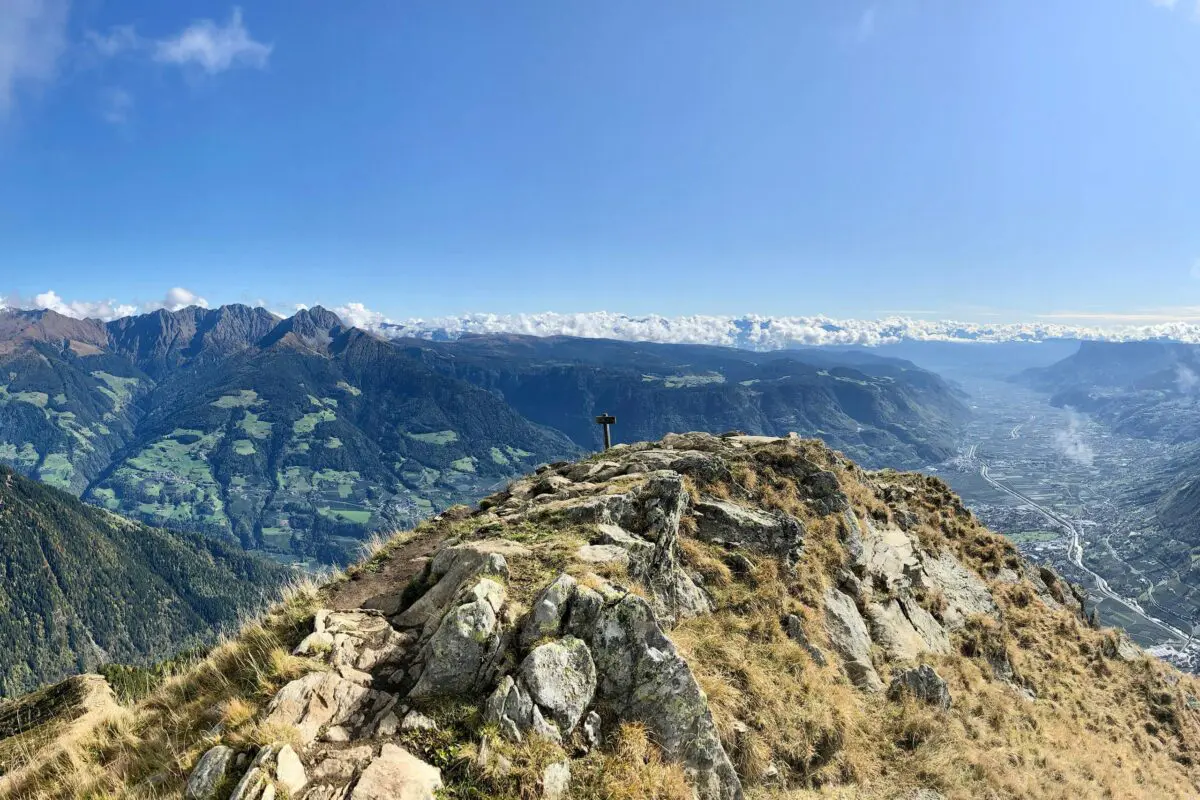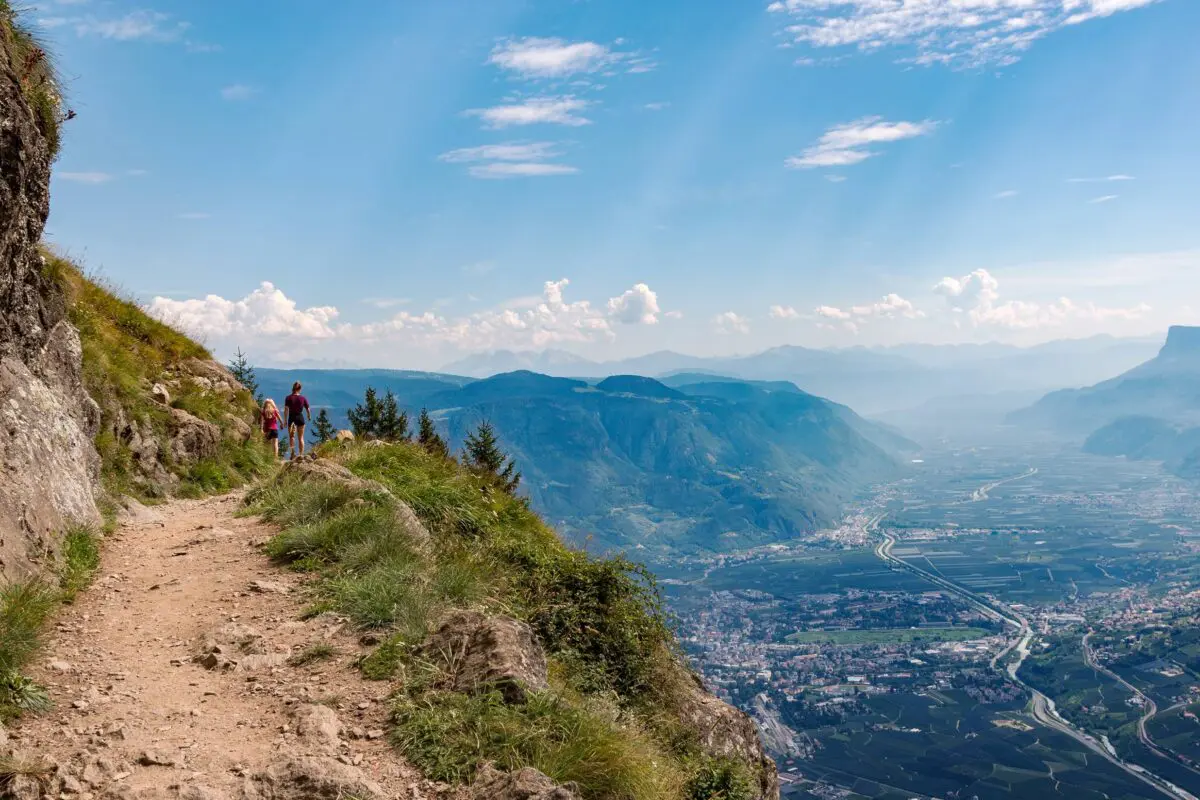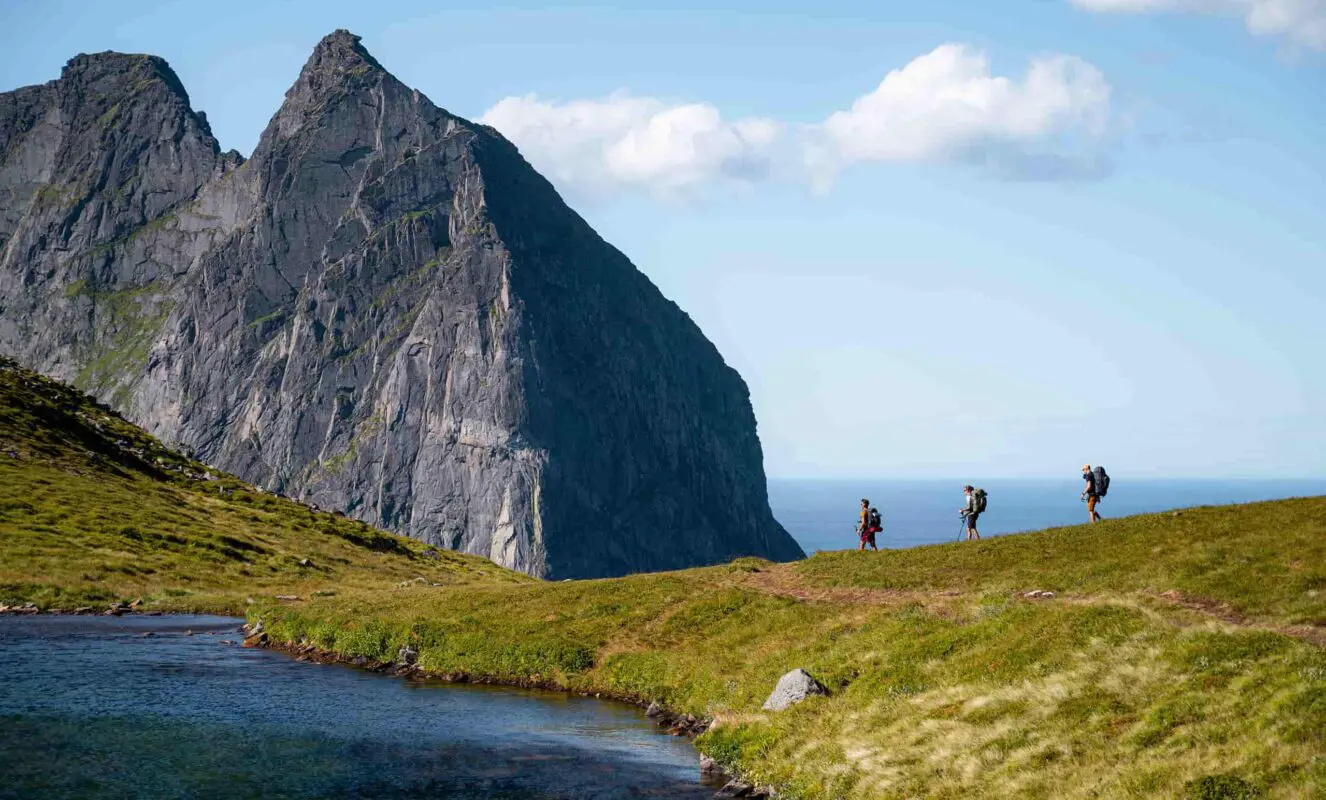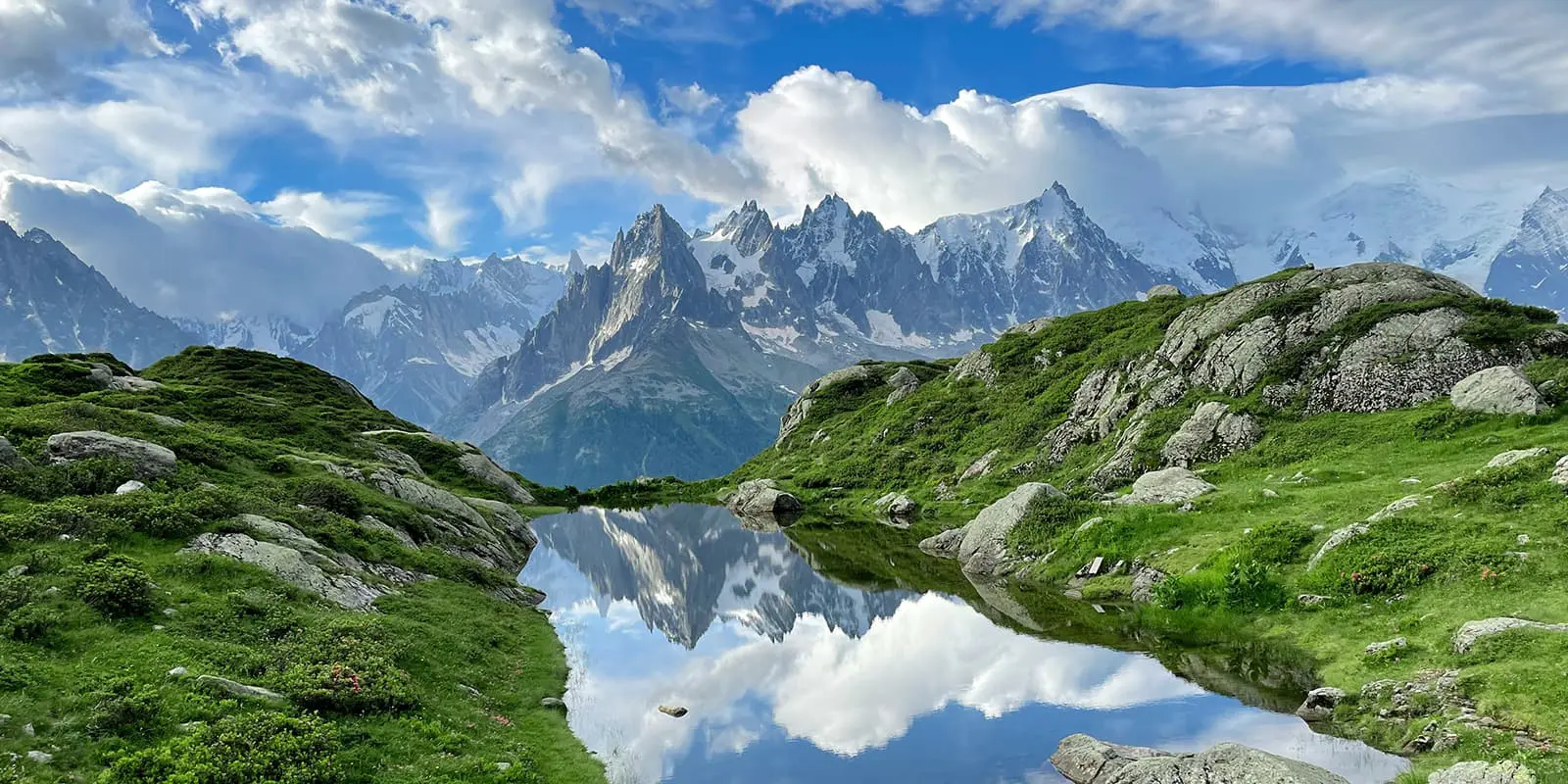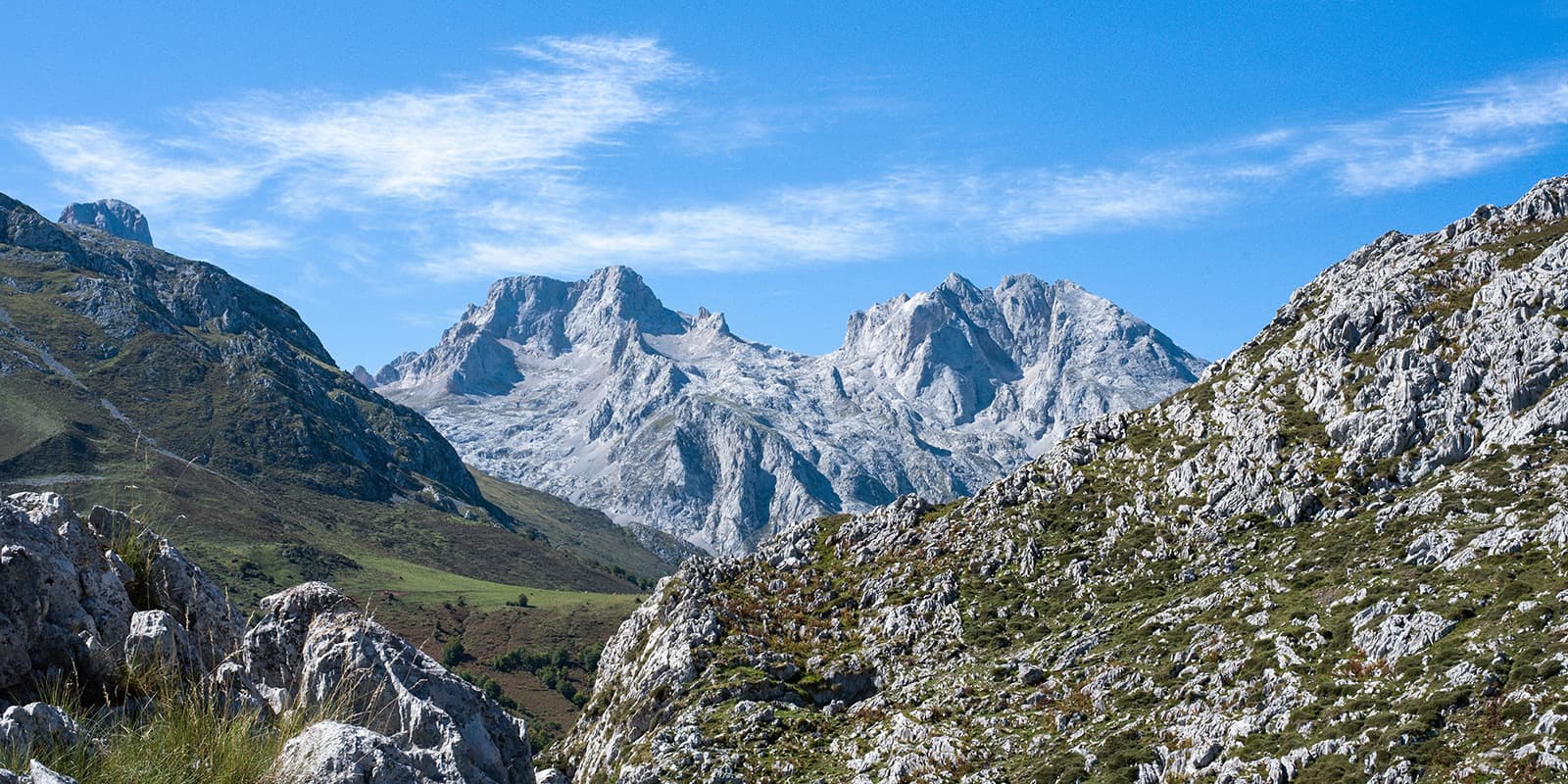The first stage runs from Hochmuth to Giggelberg, which is about 13 kilometers. You’ll start by taking the Hochmuth cable car up the mountain before you actually get on the trail. From here, it follows well-marked paths along the southern slopes of the Texel Group, where you will hike through larch forests and get your first taste of the many open ridges to come, with views of the Etschtal Valley and Merano. You’ll stop for the night in Giggelberg, where you’ll stay in the mountain hut. The second stage continues from Giggelberg to Katharinaberg and is known for the “1000-Stufen-Schlucht,” a gorge loved by hikers for its countless steps, ladders, and narrow passages. It’s fun, but also can be a challenge! On this day, the trail crosses deep ravines and open meadows, alternating between woods and slopes, before descending to the Schnalstal Valley and the village of Katharinaberg.
From Katharinaberg, the third stage takes you through quiet mountain farms and alpine pastures into the Pfossental Valley, one of the most scenic and remote valleys in South Tyrol. The trail climbs steadily to reach the Eishof, a high pasture farm surrounded by peaks. You’ll sleep here in the Eishof Alm, just be sure to book it far ahead of time. The fourth stage from Eishof to Pfelders is one of the most demanding of the entire circuit. The route ascends through rocky terrain to the Eisjöchl at 2,895 meters, passing the Stettiner Hut, then drops into the Pfelderer Valley. The descent takes you through alpine meadows and past the Lazinser Alm before reaching the village of Pfelders. As of 2025, there is a trail closure on this stage, and you will need to detour via the Tumlhof farm. It’s going to add about 1.5h to your day, so it’s good to start early. The closure is expected to be present until 2026 at the earliest.
The fifth stage continues from Pfelders to Matatz. The trail softens here and is a bit easier after the demands of the day before. You will follow forest paths, gentler slopes, and farms as the trail goes through Ulfas and Christlhof. Finally, the last stage from Matatz back to Hochmuth closes the circuit. It climbs and descends through forested ridges, giving you open views over the Vinschgau Valley, Merano, and the Dolomites before returning to the starting point at Hochmuth.


